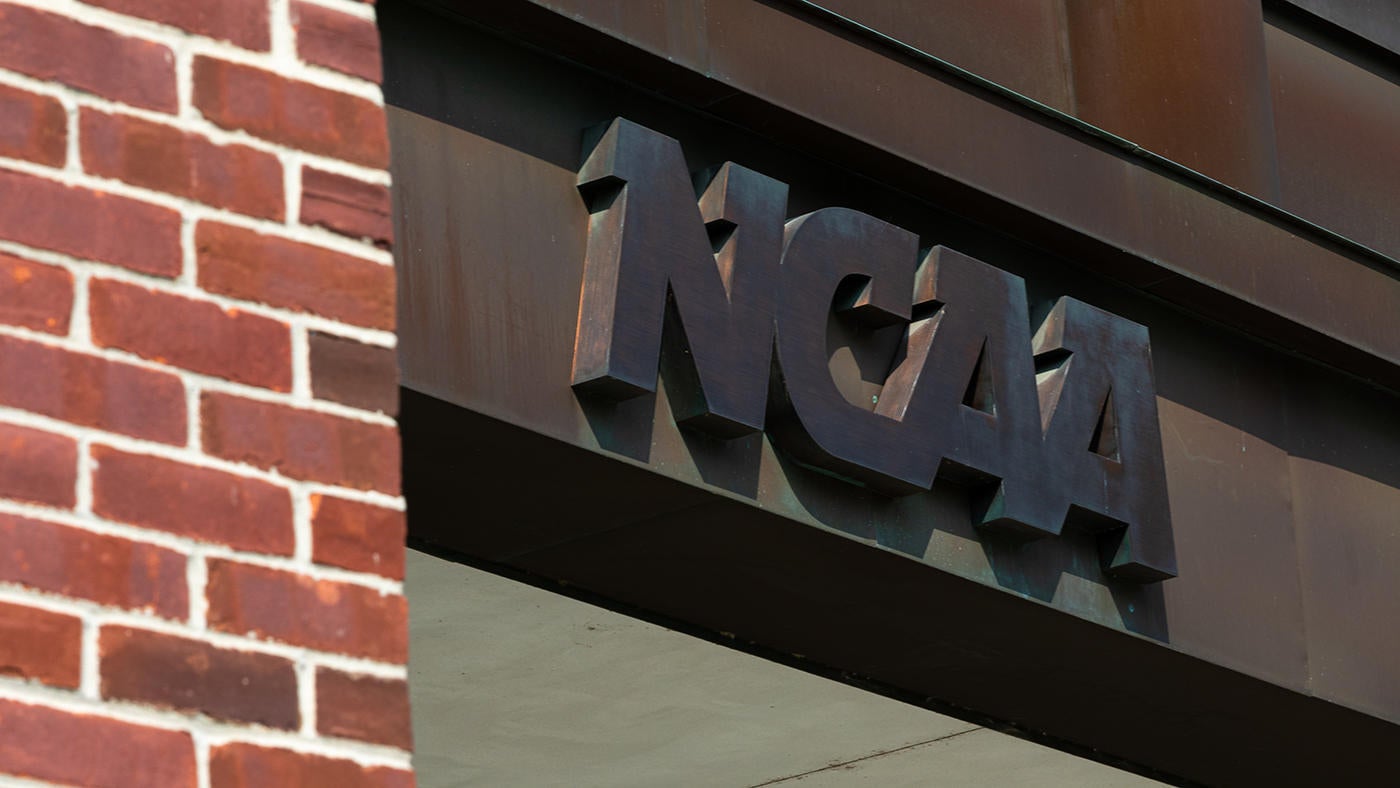Multiple hurdles remain to paying college athletes despite concessions in new NCAA proposal
Written by CBS SPORTS ALL RIGHTS RESERVED on December 7, 2023


LAS VEGAS — After making his first public appearance since Tuesday’s earth-shaking player compensation proposal, NCAA president Charlie Baker slipped out a side door and down a service elevator as a few media members attempted to ask questions.
“It’s just a start,” he said of his plan before hitting the “down” button.
That much was obvious on Day 1 post-proposal, which signals a new NCAA age — if the changes can get traction. Baker was short on specifics speaking Wednesday at the Sports Business Journal Intercollegiate Athletic Forum. But that wasn’t entirely the point. We’re still in the afterglow phase of a plan that would essentially edge right up to a pay for play model.
That idea itself takes some getting used to. The “how” to get there is something else. We’ve come a long way since former NCAA president Mark Emmert proposed a $2,000-per-student stipend in 2011. That suggestion was looked at sideways before it finally became the basis for modest cost-of-attendance increases.
Baker’s proposal gets the conversation started when it comes to sharing revenue … but not exactly revenue sharing. The idea is so bold some commissioners and administrators were upset Baker didn’t update them as he was formulating his plan. The NCAA CEO has showed himself to be a veteran politician who can work behind the scenes. Who needs updates when you’re reconfiguring the world?
The model will begin to be shaped next month at the NCAA Convention. Baker called the pace of change an “urgent patience.” Lawsuits are closing in from every angle. If the NCAA doesn’t fix itself there are predators on the horizon. An investment fund giant suggested Wednesday that college athletics is so undervalued the Michigan football program would be worth $1 billion if it was on the open market.
If the traditional legislative path is followed, the NCAA may not be able to pass new rules until 2025.
“If we screw it up, I’m not sure we’ll appreciate how much we’ve screwed ourselves up for a very long period of time,” Baker said of the process.
Below is a sketch of how the proposal might work, and the hurdles it might face.
Trigger words
The proposal contains plans for a new subdivision of the 362-member Division I. The word “subdivision” is a trigger to some members. When Division I subdivided in 1978, Division I-AA (now FCS) was told it would get its own playoff and be able to capitalize on increased TV revenue.
Half of that promise came true. Some of those schools’ brands became diminished when they played at a lower level despite the FCS playoff. Baker threw out the number “100” that would be featured in the new subdivision. (There are currently 133 schools in FBS.) That’s a trigger, too, as it suggests the lower part 25% of the Group of Five might be left out due to budget restraints.
“They would be in there, too,” Baker assured CBS Sports.
No one knows for sure. We’re at this place because the Power Four conferences — ACC, Big Ten, Big 12, SEC — want more flexibility in deciding how they operate. Baker’s plan acknowledges those leagues’ influence and power while making the new compensation model optional.
“That’s why I don’t think there will be a lot of Group of Five support,” said Mit Winter, a sports law attorney attending the forum. “If you’re a G5 school, why would be in favor of a plan that would require to, No. 1, pay tons of money to a trust fund?”
That’s the ultimate impact of any of this — a further separation of the haves and have nots.
A significant number of schools already struggle mightily to fund athletics. Only a handful of athletic departments — maybe 20 — turn a profit and can actually write a check back to their university each year.
Now add on an annual budget item for $7.5 million to pay for Baker’s proposed trust fund. That unintentionally suggests that schools in the MAC, Sun Belt and Conference USA might not be able to afford it. FBS membership is like a five-star steakhouse whether you’re Georgia Southern or Ohio State. It brands your product. It’s the white tablecloth of college athletics. The designation affects enrollment, state subsidies and obviously the ability to sponsor non-revenue sports.
A new subdivision potentially stamps those lower-resourced schools with somewhat of a scarlet letter. Estimates are the average school will have to come up with that average of $7.5 million to stock the annual trust fund. That figure comes from Baker’s proposal of an annual $30,000-per-athlete payment being made into trust funds.
“There is a difference between what I would describe as the top 100 schools and the other 250 [in Division I],” Baker said. “What happens is the NCAA ends up one of these collisions that take place because you have one-third of the schools that have the ability to do more for athletes.”
Competitive equity has been an issue for decades. Does it matter? No matter how much NIL money pours into the system, Akron (for example) isn’t likely to challenge Alabama for a College Football Playoff spot.
“That’s a permissive standard,” Baker said of the $30,000. “It’s a standard designed to establish the minimum. People can do more and people who don’t want to be in this division can do pretty much whatever they want.”
There is the issue of access to championships. Schools that can’t afford the trust fund will ultimately be limited in recruiting. And while those schools will be eligible for the College Football Playoff as members of the FBS, will they be able to actually compete for a spot?
Even for well-resourced schools, trying to find an extra $7.5 million may put a drag on coaching budgets and the funding of minor sports. The former is not necessarily a negative for those who have a distaste for out-of-control buyouts, and arbitrary sports sponsorship minimums (schools have to fund at least 16 sports in Division I) bother some as well.
“In an uncapped world, large schools with large alumni bases and large donors will do better,” said one conference official at the forum. “Is that what we what? The real question we need to ask is, ‘What do we want to really create?’”
Congress, again
Baker’s initiative will be severely impacted if help does not come from Congress giving the NCAA legal room to make the changes. But what else is new? Since NIL was allowed 2 ½ years ago, the NCAA has been asking for antitrust protection from being sued. Anything that hints at capping compensation will be fodder for more legal action.
The NCAA and its membership are burdened by those multiple lawsuits that could bring down the entire association.
“I just want something that says, ‘Yes, this is a good way to do this and to solve this problem,’” Baker said. “Without that, we’re just going to be in this forever.”
Next month begins a presidential election year where Congress’ focus will certainly shift to getting their respective candidates elected. Not to mention existing crises regarding Ukraine and Israel.
However, as multiple sources suggested, the advantage now is that the NCAA at least has a plan. Before, it was going to Congress to continually ask for change.
“I think [the NCAA] wants to get something that sets limits around athlete compensation and player movement,” Winter said. “As long as they [don’t] have any rules around that, they’re afraid they’re going to get sued.”
External forces
Jim Cavale heads Athletes.org, a non-profit that operating around the edges of what collective bargaining might look like.
“We need to negotiate ‘the new deal’ for revenue sharing with college athletes,” Cavale told CBS Sports. “This proposal is a start. There is a proposal that will emerge and the schools will want to implement. They cannot do so without negotiating a deal with the athletes through a group like ours.”
Why not? We live in a time when the starting quarterback for the San Francisco 49ers (Brock Purdy, salary $870,000) makes less per year than the average top-notch college quarterback coming out of the transfer portal ($1 million to $2 million). Five pro sports labor unions now endorse the concept of college players unionizing.
Gerry Cardinale suggested, even if college athletics gets its house in order, someone or some entity will eventually buy it. The CEO of RedBird Capital Partners — an investment firm — told the audience that college athletics is vastly undervalued.
“The cost of winning, the competing, is going up,” Cardinale concluded. “You’ve got to spend if you want to win.”
Those equity giants are waiting on college sports’ front yard for a chance to make a presentation. In August, it was reported Florida State had engaged with equity firm JP Morgan to help fund its exit from the ACC. The prohibitive cost to break the conference’s grant of rights with 13 years remaining on the deal with ESPN could exceed $300 million.
Last year, Redbird acquired soccer giant AC Milan for $1.5 billion. Cardinale said, to raise their values, the top 60 or so programs should consider merging as a single entity similar to the NFL.
“I’m watching what’s happening here, and I’m telling you one of the questions you should be asking everybody is, ‘Is this the beginning of the end of the conferences?’” Cardinale said. “How about one big college 68[-team league]?”
The NFL produces five times more revenue than college sports, Cardinale said, despite college sports having more fans. Instead of edging toward more of an employee-employer model, he suggested to make the players partners in growth opportunities. That could start with the new College Football Playoff TV contract, which is estimated to exceed $1.5 billion per year beginning in 2026.
Considering all that, what’s another $7.5 million?
The post Multiple hurdles remain to paying college athletes despite concessions in new NCAA proposal first appeared on CBS Sports.







